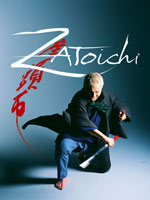The breaking of boards and other hard objects is known as "Tameshiwari."
"Tameshiwari" requirers an advanced level of physical conditioning and an acquired mental toughness. Typically, in Uechi, 2 x 2 poles about 5' in length are broken across an extended forearm, across the mid-section, the sides of the shoulder, over the thigh and across the shin as a demonstration of advanced Sanchin conditioning.
The same 2 x 2's are broken with the Uechi toe kick. Larger boards, 2 x 4's are mounted in racks and broken with roundhouse kicks as are baseball bats. The record is about 5 bats mounted in a rack snapped with a single roundhouse.
The recent book by Alan Dollar, SECRETS OF UECHI RYU KARATE" contains many photos of Uechi masters and students participating in these breakiing demonstratins.
Dollar writes:
Uechi ryu masters are known for amazing bfreaking demonsgtrations. The extraordinary level of body conditiong developed over years of rigorous training is demonstrated by breaking boards, bricks, roof tiles, poles, two by fours, and baseball bats. ...
"The degree of body conditiong discussed here does n ot apply to children. Muscular and skeletal develoment from karate practice is good for children, makiwara training is not. Children's bones are still growing and should not be subjected to repetitive striking of hard surfaces."
Sensei Dollar also has a 3 volume video training series which shows and explains the purpose of numerous tameshiwari techniques as demonstrated by Sensei Dollar and some of his advanced students.
Volumes 1 (Sanchin) and 4 (Training & Conditiong) of Shinyu Gushi's 7 vol. video series Pangai Noon Karate show Guishi Sensei and his son among others demonstrating board breaking.
Breaking was introduced to our dojo through the teaching of Toshiyuki Itokazu, "Master Tosh" who was a senior student of Uechi Kanei Sensei and who introduced Uechi-Ryu Karate to several Florida locations in the 1970's.
Dollar also states:
The poles are cut short and the boards are cut long. An enormous amount of force, focus and technique is necessary to break wood in the humid climate of Okinawa.


